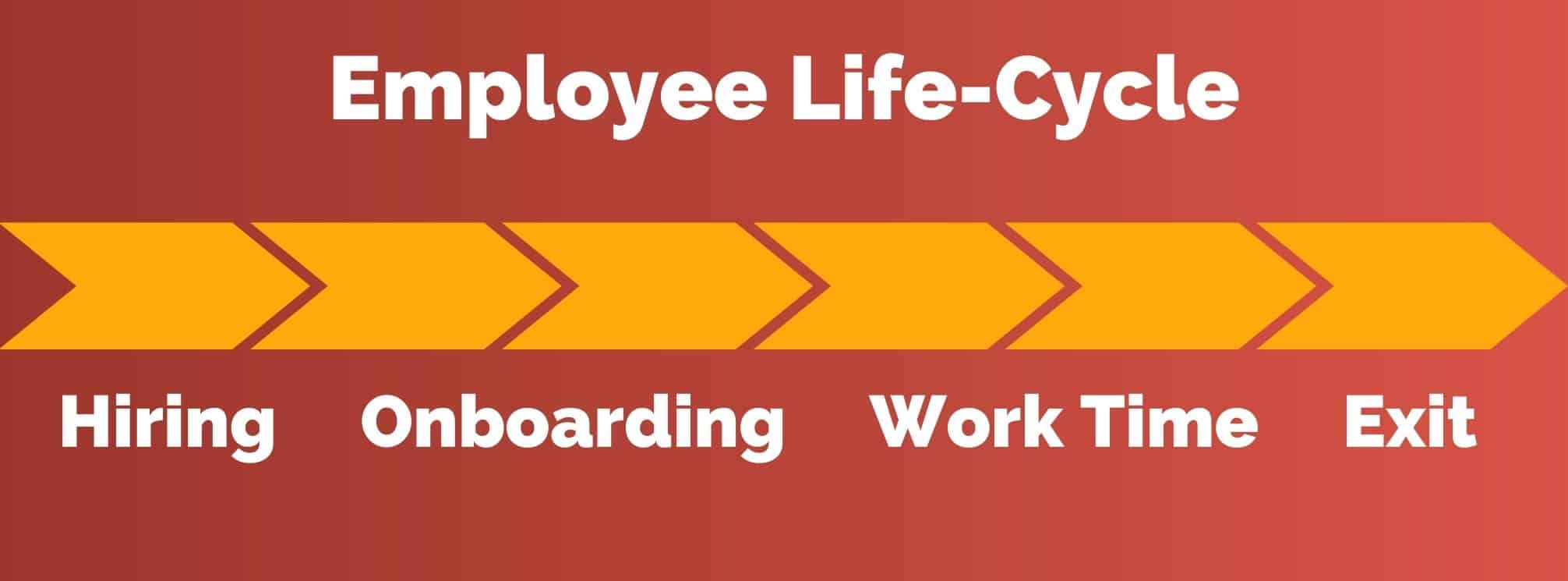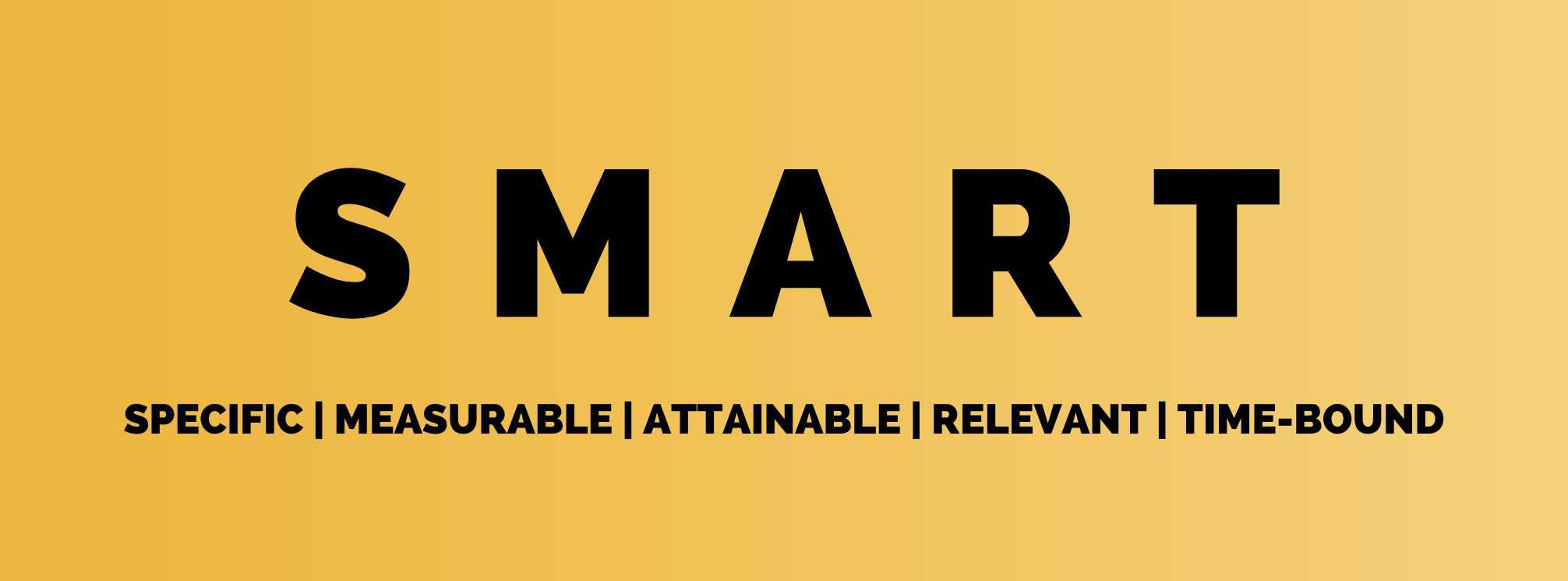What is Employee Experience?
Employee Experience (EX) is a term used to describe the overall experience an employee has at a company. This spans the entire employee lifecycle from hiring and recruiting to the time an employee quits your company and goes through the exit process.
What is the Employee Experience (EX)?
Employee Experience includes every touchpoint an employee has with your organization. It includes everything from interactions with their manager, fellow employees, and executive leaders to their experience with your brand, internal communications as well as.
Simply put, EX is what it’s like to work at your company.
The Employee Lifecycle
One of the best ways to understand (and therefore improve) EX is to look at the employee lifecycle:
- Hiring/Recruiting. This is often your first impression! The recruiting process introduces employees to your culture and gives them a sense of what it’s like to work at your company.
- Employee Onboarding. This is where you set your employees up for success with the systems, tools, and training they’ll need. It’s also where relationships start to develop and where they start seeing the culture and values in action.
- Work Time. This is the day-to-day of a job. It’s impacted by your benefits package (or lack thereof for hourly or part-time workers). And it’s where the relationship with an employees’ direct manager really sets the tone. Managers cause 70% of the variance of employee engagement because they are such a big part of an employees’ daily experience.
- Employee Exit. This is a stage that a lot of companies miss. After an employee puts in their resignation, is laid off, or fired, there is still a lot of time to impact the lasting impression that employee will leave with. Will they feel jaded or burned? Or supported and impressed? This all hinges on the exit interview and how an employee is treated after they decide to leave.

You need to look at all of these stages. How you start and end that relationship is just as important as the day-to-day. For well-known brands, you also have to consider that your future employees may have interacted with your brand as a customer. If they had an amazing customer experience but a lackluster employee experience, this can create dissonance.
Even if you haven’t consciously thought about the experience at your company…there is one. And it can be good or bad for different employee groups.
What is Digital Employee Experience (DEX) and How is it Different?
You may have also heard about the digital employee experience or DEX. This refers to the experience employees have with your company on digital platforms.
Because the way we work is increasingly moving online—including how we meet, communicate, and collaborate—it’s important to consider your digital touchpoints in addition to the in-person and on-site ones.
A few examples that communicators and human resource professionals should look at are:
- The company intranet
- If communication and resources are housed behind a VPN
- HRIS system and how it’s accessed
- If your channels and websites are mobile-optimized
- The accessibility of your communication, resources, and websites

What is the Digital Employee Experience (DEX)?
A subset of employee experience is the digital employee experience. This refers to the specific experience employees have with your company via digital platforms.
These digital platforms include:
- Communication Channels (e.g. Intranet, email, employee app, etc.)
- HRIS (e.g. Workday/ADP, Payroll System, etc.)
- Company Website
- Company Social Media Accounts
- Workplace Technology (i.e. what tech employees use to do their jobs)
Digital employee experience is its own category in this conversation because technology is so inundated in our lives and jobs. As companies have undergone digital transformation, sometimes technology is adopted at a company without a thorough investigation of the end-user’s experience of the tool. This has led to organizations having too much of the wrong technology and online platforms.
What is the Difference Between Employee Experience and Engagement?
Employee experience (EX) and employee engagement are very interrelated. While employee experience is the journey of someone through your employee lifecycle, employee engagement is a state of being.
Gallup defined Employee Engagement as “the basic psychological needs that must be met in order to perform your work well.” Specifically, companies look at how committed and involved an employee is at work, which is why it’s become such an important buzzword in recent years.
So much emphasis has been placed on engagement that we often overlook the employee lifecycle and the experience at each stage. While it’s true that some employees can be engaged even in toxic work environments because of their personalities, typically, if EX is poor, engagement also suffers.
Let’s explore that link. Gallup says it best: “Engagement is not an event, an incentive program, or a fun perk.” It’s mostly driven by our relationships at work. We’d argue that one of the biggest influencers for your experience at work is also these relationships and if you feel supported, valued, and respected.
So, engagement can influence employee experience…and vice versa. Consider this:
- How engaged your employees are has an effect on how they think about your company and the experience they have working there. Engaged employees also have a positive effect on their peers’ experience. Whereas disengaged employees can bring morale and culture down (but don’t blame them—help them!).
- But the inverse is also true, right? If you have a positive work environment that’s safe, respectful, and supportive, those employees are more likely to feel good and have a healthier, more engaged mindset at work.
Since engagement and EX are linked, they should be discussed together. If you’re seeing low employee engagement scores, you have to fix the root of the problem, which is likely environmental.

Why is the Employee Experience Important?
Investing in the employee experience has many benefits for your workplace. A few of the top benefits include:
Improving Employee Wellbeing and Psychological Safety
Unfortunately, very few companies are meeting the basic needs of their employees.
- Gallup research has found that 70% of employees don’t have the tools they need to do their job and 60% don’t feel they have the chance to do what they do best.
- The Blueboard 2022 State of the Workplace Connection Report found that 60% don’t believe their employer makes them feel seen or appreciated.
- SafetyCulture found that 90% of frontline workers want their voice to be heard and valued, but one third believe nothing will be done if they report issues at work.
This means that the average workplace does not create an environment where employees feel valued. But when we focus on improving the employee experience and addressing these negative emotions, we can show employees we care, meet their needs, and create safer work environments.
Improving Profitability
Workplaces that focus on EX also see greater profits. This is because you cut back on toxic employees and managers, show more frequent appreciation, and work on deconstructing bottlenecks for your workers that impede productivity.
CultureAmp has found that a positive EX leads to two times the innovation and 25 percent higher profits. And SHRM found a correlation between high EX scores and 40% lower turnover.
Improving Brand Reputation and Recruiting
When you become known for having a great workplace culture, this impacts our ability to hire and retain talent. A great EX therefore becomes a powerful driver of your brand reputation.
When employees feel cared for and positive about work, they are more likely to become employee advocates for you on social media and leave more positive reviews on sites like Glassdoor. This helps you become a talent magnet and fill open positions faster.
Improving The Customer Experience (CX)
Studies have shown that one of the best ways to improve CX is to start by improving the employee experience. This is because your frontline employees are the ones responsible for providing great customer service. But when employees are overwhelmed, not supported, and generally feeling negative about their workplace, it becomes harder to provide great service.
So, when done right, a great employee experience can double customer satisfaction scores.
Improving Employee Engagement Scores
Employee engagement has been a big topic of conversation in the workplace for a while now. This is because engagement is correlated with many important key performance indicators like retention, productivity, safety, and so on.
And engagement and employee experience are linked. One way to re-engage a disengaged worker is to focus on their experience. What is causing their disengagement? What is causing high absenteeism rates? In many cases, you will find something in that employee’s environment, whether it’s a bad boss, unsafe work environment, a toxic culture, or improper tools that is causing them to not be as engaged and productive at work as they otherwise might be.
So, by focusing on various factors that contribute to the employee experience, you create work environments that are more conducive to productivity and higher employee engagement levels.
How is EX Measured?
This can be where it gets tricky because internal communications professionals can struggle with measurement. That said, we have to start measuring employee experience so we can begin making meaningful improvements that we can correlate with business success.
There are many ways to measure employee experience. There are numerous internal communication metrics and analytics tools that can help such as:
- Employee Surveys. Surveying employees is a great way to create data around topics like employee engagement and employee experience. These surveys help give you evidence of how employees feel about work and start determining where the employee experience might be more negative or positive and why. This might include questions like:
- Whether employees feel physically safe and psychologically safe at work.
- If they feel they have the tools, training, and opportunities to do their jobs and capitalize on their skills.
- How employees are treated by their managers, peers, and executive leaders.
- If they feel like they have a valued voice within the company and their direct teams.
- If they feel like they are fairly treated and compensated.
- Focus Groups. For more detailed qualitative feedback, we recommend focus groups. To ensure you get the most accurate information about EX at your company, include a diverse, representative sample of your employee population in these sessions. Ask your focus groups about their experience with your company at all stages of their employment:
- Hiring/Recruiting. Ask how they found and applied for their job. If they were recruited, ask about what that process looked like, how they felt, and the impression it left. If they applied via your website or a forum, ask them if the process was easy, confusing, or time-consuming.
- Onboarding. Ask if they received formal onboarding and training. If so, what was that like? Was it effective? How was the pace? And if they didn’t, ask how that has impacted them ever since.
- Day-to-Day Work. A LOT of things fall into this category, so you might want to break it into separate focus group sessions. But some big questions to consider:
- How do your peers and boss treat you?
- What are your feelings about your job and the company?
- How do you get to work?
- Are you able to access the tools and resources you need on the job and outside of work (e.g. HR materials for things like benefits enrollment)?
- Exit. If you can, ask employees about their experience during the exit interview. Can you share a survey or include a question at the end of an exit interview to see how that transition went?

While employee surveys and focus groups are ways to directly measure sentiment about the employee experience, you also want to measure impact on business performance. But keep in mind that this data is correlation.
For example, we want to measure the impact of having a more positive work culture and experience. This may include:
- Attrition and whether or not you are improving turnover as you make changes.
- Time spent filling open positions.
- Average tenure of employees at your company.
- Social media sentiment and if the conversation about your brand becomes more positive.
How Do You Improve the Experience of Working at Your Company?
Deloitte has found that 80% of executives believe that employee experience is important, but only 22% reported that their companies were excellent at actually building a positive EX. And that pretty much checks out.
The 2022 State of the Sector asked internal communicators what best described their company’s approach to employee experience.
- 19% said there is a cross-departmental group in place to define and embed their EX
- 37% said there is no formal group, but a high level of collaboration
- 44% said there is limited collaboration between departments to shape EX
Even if you have a great plan, team, and strategy with leadership sponsorship, the data really shows us that we still have a long way to go to improve EX. I’m going to share a few strategies that you can begin implementing in your companies as HR and IC professionals.
Given that EX is important for a company’s business success, how do we start improving it? Because so many factors impact someone’s experience, this can be overwhelming. But there are a few areas that you should focus on that may have a bigger impact than others.
Set SMART Goals
Before you can focus on any actual tactical and strategic changes for EX, you have to have goals for your company. This may require you to survey and talk to employees to get a baseline to benchmark and measure against.
But then you can set smart, measurable, attainable, relevant, and time-bound goals. And this will help you see if you are actually improving employee experience or not.
Here’s an example. Say you start a pulse survey where you ask employees: “How positive is the work environment at [our company].” With the answers: Very Positive, Positive, Neither Positive or Negative, Negative, or Very Negative.
Your smart goal might be to increase the percentage of employees who say either positive or very positive by 20% by the end of the year. This goal has a specific question and percent increase in mind. It’s bound to a timeframe so you can gauge if you missed or achieved your goal. The goal is measurable because it’s tied to your regular survey. It’s relevant to your overarching goal of improving EX. Whether it’s achievable totally depends on your starting point! You don’t want to aim too low, but you also don’t want to set totally unrealistic goals.
Focus on Key Milestones in the Employee Journey
There are so many things we could improve about the day-to-day at our companies, but focusing on a few of the most important milestones first can help focus your efforts early on.
These milestones include:
- The hiring process. The hiring process is an employee’s first glimpse at what it’s like to work at a company. It lays the foundation for every interaction after that. And little things make a big difference here. Do you leave candidates waiting for too long? Do they have to jump through many hoops to get a job? What is the application process like? Fixing and improving this experience can make a big difference and get employees off on the right foot.
- Onboarding. Onboarding is maybe the MOST IMPORTANT thing companies can focus on to set employees up for long term success. But most companies miss the mark here. Many employees are given an “onboarding checklist” by HR and the rest is up to managers. But we miss many opportunities to welcome employees, help engrain them in the culture, coach them properly, and ensure they are well trained. This makes it harder for employees to perform well and it takes longer for them to do so.
- Annual Training/Manager Feedback. Performance reviews, annual training, and ad hoc feedback from managers are another big milestone in an employee’s lifecycle with your company. If employees don’t receive proper training, support, and coachable feedback, they may not feel valued, they may stagnate, and they may become frustrated in their roles.
- Stay Interviews. If you aren’t already conducting stay interviews, starting the practice may drastically help the EX. These interviews are conversations to understand how an employee feels about their role, their team, and the company. It helps managers learn what it would take to keep an employee around.
- Exit Interviews. When an employee resigns, the experience can vary. Many employees who quit aren’t treated well, like they are traitors or like they have put their team in a tough spot. This can burn a bridge and prevent a great employee from ever wanting to “boomerang” back to your company. And even worse, it can tarnish your brand’s reputation and kill the potential for ongoing advocacy. So, getting the exit process right for employees isn’t just the right thing to do, it also helps your business.
Focus on DEX
Audit your digital platforms. Are they really making employees’ lives or jobs easier? Or is it digital clutter that creates noise and complexity in the workplace?
This may lead you to find different solutions like theEMPLOYEEapp that consolidate systems and technology and consider the end user experience just as heavily as the company/administrator experience.
But you may also discover accessibility issues with your existing communication channels and technology that need to be addressed to adequately include your entire workforce.
Start an Employee Recognition Program
Showing employees that you appreciate them is a great way to improve how they feel about work. There are many ways to show employees recognition, but a good rule of thumb is to have employee recognition come in a variety of ways.
- Type: Formal & informal recognition (e.g. performance reviews vs. shoutouts during a shift meeting).
- Who: From their direct manager, from peers, and from senior leaders.
- Forms of recognition: praise, awards, monetary, promotions, etc.
Invest in Training
The main reason people change jobs is to pursue career growth opportunities. And in the current climate, it often comes with higher compensation and better benefits. This can make it hard to compete if you don’t offer growth opportunities for existing employees. A great way to change this is to invest in training programs for your staff and to promote more internally.
Not only will this help you retain employees who otherwise would have to see learning and development elsewhere, but you also send the message that employees matter to you. That their growth is important. That they’re worth investing in.



